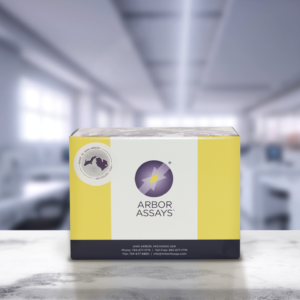Sensitive Assays for Cyclic Nucleotide Signaling
Cyclic adenosine monophosphate (cyclic AMP or cAMP) and cyclic guanosine monophosphate (cyclic GMP or cGMP) are prolific intracellular signaling molecules. cAMP is synthesized from adenosine triphosphate (ATP) by the enzyme adenylyl cyclase (AC) and used for intracellular signal transduction in many organisms.
Adenylyl cyclase (AC) resides on the inner surface of the cellular lipid bilayer. Signaling molecules activate AC through AC stimulatory G (Gs)-protein-coupled receptors and agonists of AC inhibitory G (Gi)-protein-coupled receptors inhibit AC. Variation in the expression of these receptors allows for tight control of AC activity in different tissue types. For example, extracellular glucagons more strongly upregulate liver AC activity, while muscle AC reacts more strongly to adrenaline. Phosphodiesterase enzymes catalyze cAMP decomposition into AMP. cAMP is involved in the activation of protein kinases and regulates the phosphorylation of a variety of substrates. Recent research suggests that cAMP also affects the function of higher-order thinking in the prefrontal cortex by regulating ion channels called hyperpolarization-activated cyclic nucleotide-gated (HCN) channels.
Guanylate cyclase (GC) catalyzes cGMP synthesis by converting GTP to cGMP. Peptide hormones like atrial natriuretic factors activate GC. Nitric oxide activates soluble GC to stimulate cGMP synthesis. cGMP is a standard regulator of ion channel conductance, glycogenolysis, and cellular apoptosis. It also relaxes smooth muscle tissues, and in blood vessels, relaxation of vascular smooth muscles leads to vasodilation and increased blood flow.
The first immunoassays for cyclic nucleotides were published in the early 1970s, and the introduction of commercially available radioactively labeled cAMP and cGMP allowed the measurement of cyclic AMP and GMP at lower and lower concentrations. Most RIAs for cAMP and cGMP have been replaced by colorimetric, fluorescent, and now, chemiluminescent immunoassays. The advent of direct assays for cAMP and cGMP, which allow the cyclic nucleotides to be measured in cells and tissues without the need for lengthy pretreatment steps, now enables the measurement of femtomoles of these molecules in just a few hours.
The Arbor Assays cAMP Colorimetric EIA (K019-H) and Chemiluminescent CLIA (K019-C) assay kits and cGMP Direct ELISA (K065-H) assay kits, allow for simple, rapid determination of cAMP or cGMP in tissues, cells, saliva, urine, plasma or culture media. Our Chemiluminescent kits are the most sensitive methods available for measuring these molecules. They are ideal for low concentrations of cAMP or cGMP and when only minute amounts of sample are available. For research use only. Not for use in diagnostic procedures.
Featured Products
-
In Stock
Cyclic AMP Direct Chemiluminescent ELISA Kit
$493.00 – $1,968.00The DetectX® Cyclic AMP Direct Chemiluminescent ELISA Kits directly and quantitatively measure cAMP present in a variety of samples.
-
In Stock
Cyclic AMP Direct ELISA Kit
$446.00 – $1,783.00The DetectX® Cyclic AMP (cAMP) Direct ELISA Kits quantitatively measure cAMP present in a variety of samples.
-
In Stock
Cyclic GMP Direct ELISA Kit – Improved Sensitivity
$460.00 – $1,837.00The DetectX® cGMP Immunoassay Kits - Improved Sensitivity is designed to measure cGMP directly and conveniently lyse, stabilize and measure in one step.


